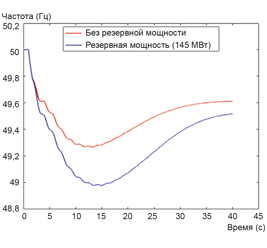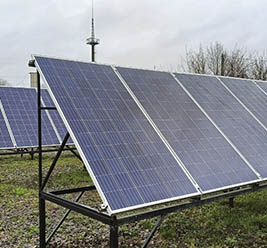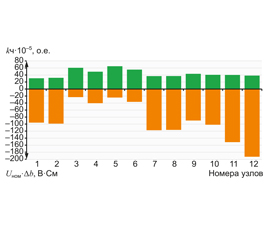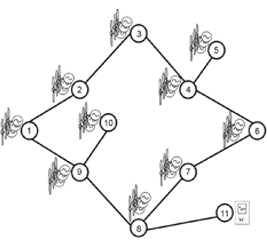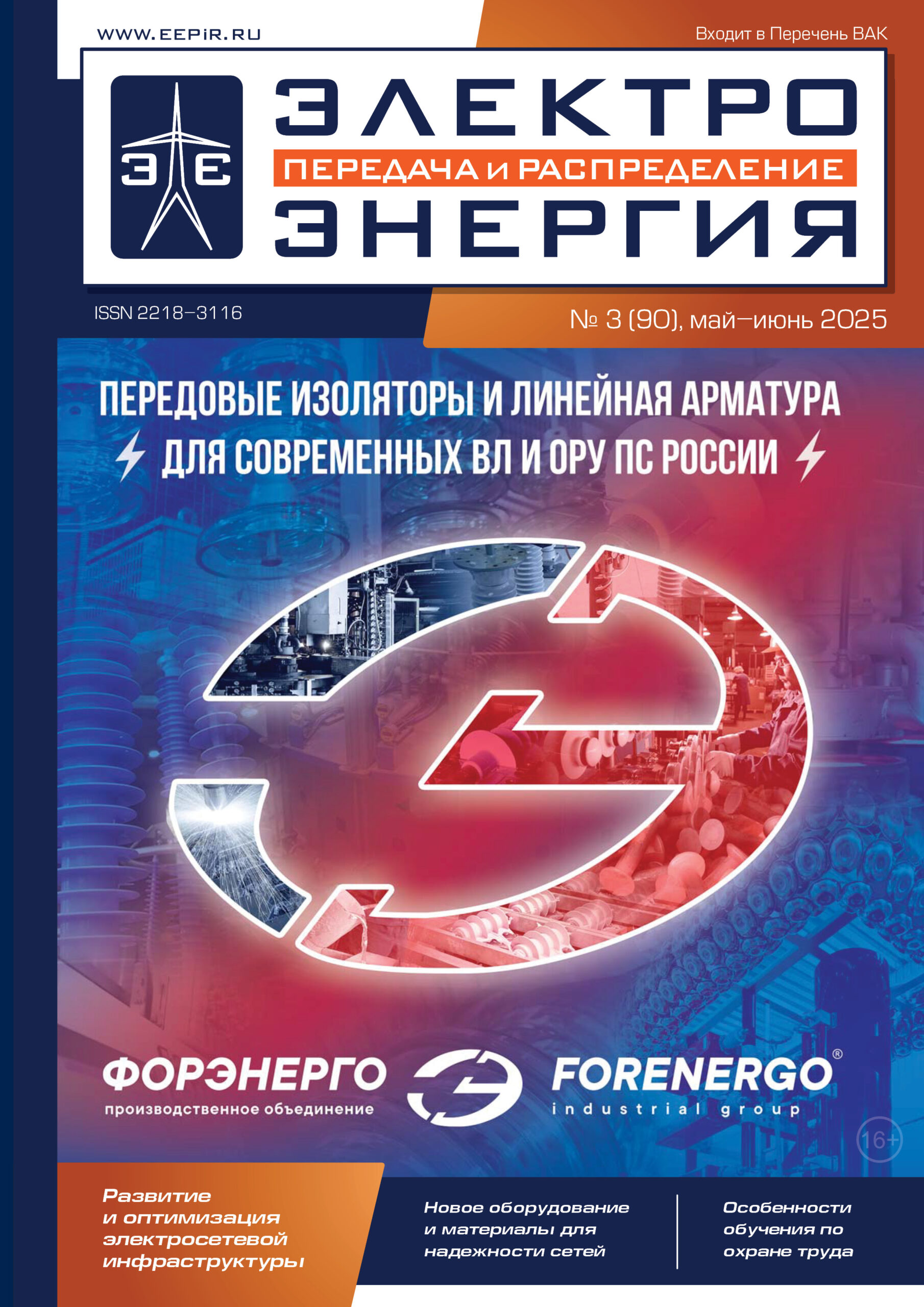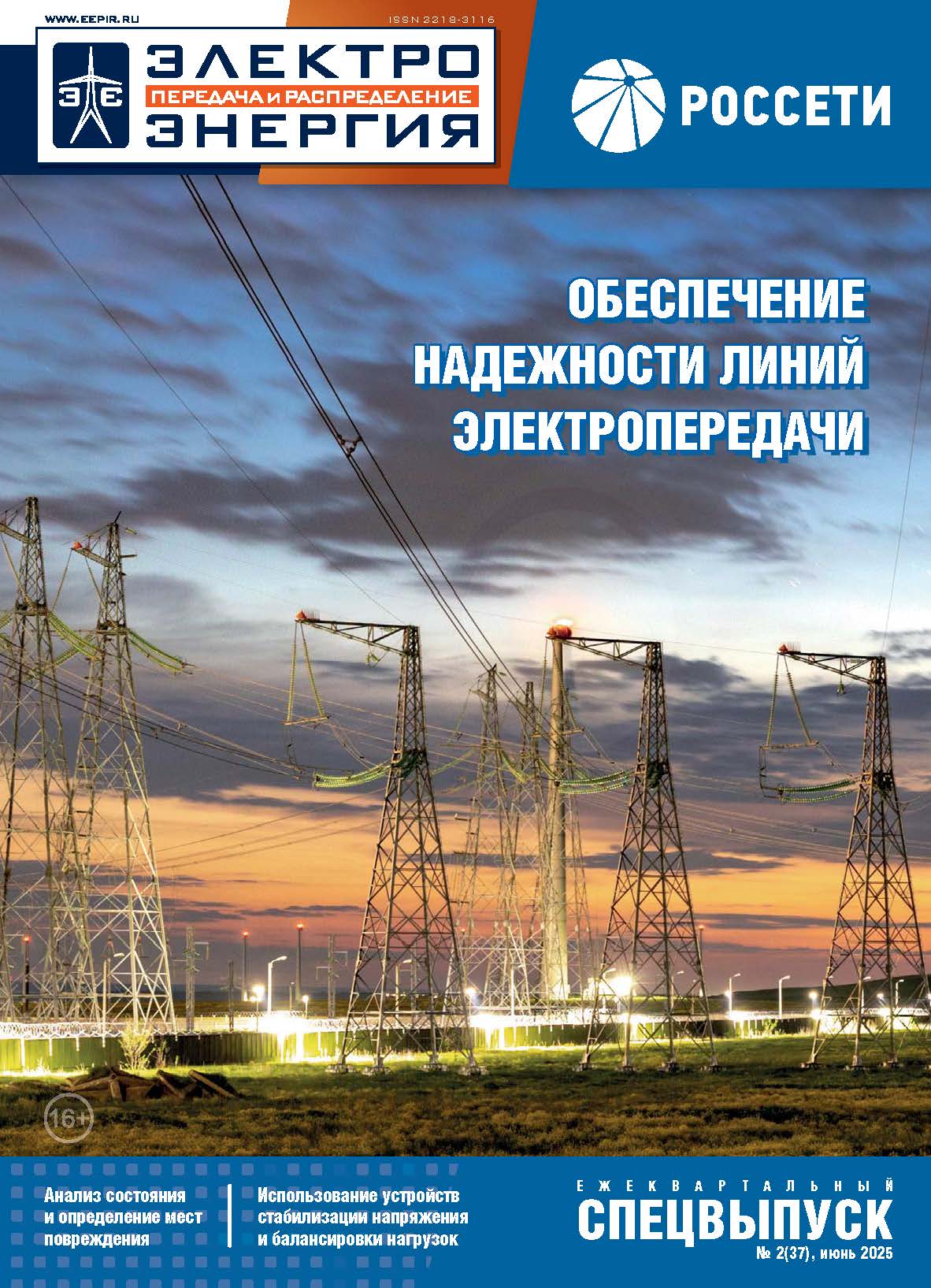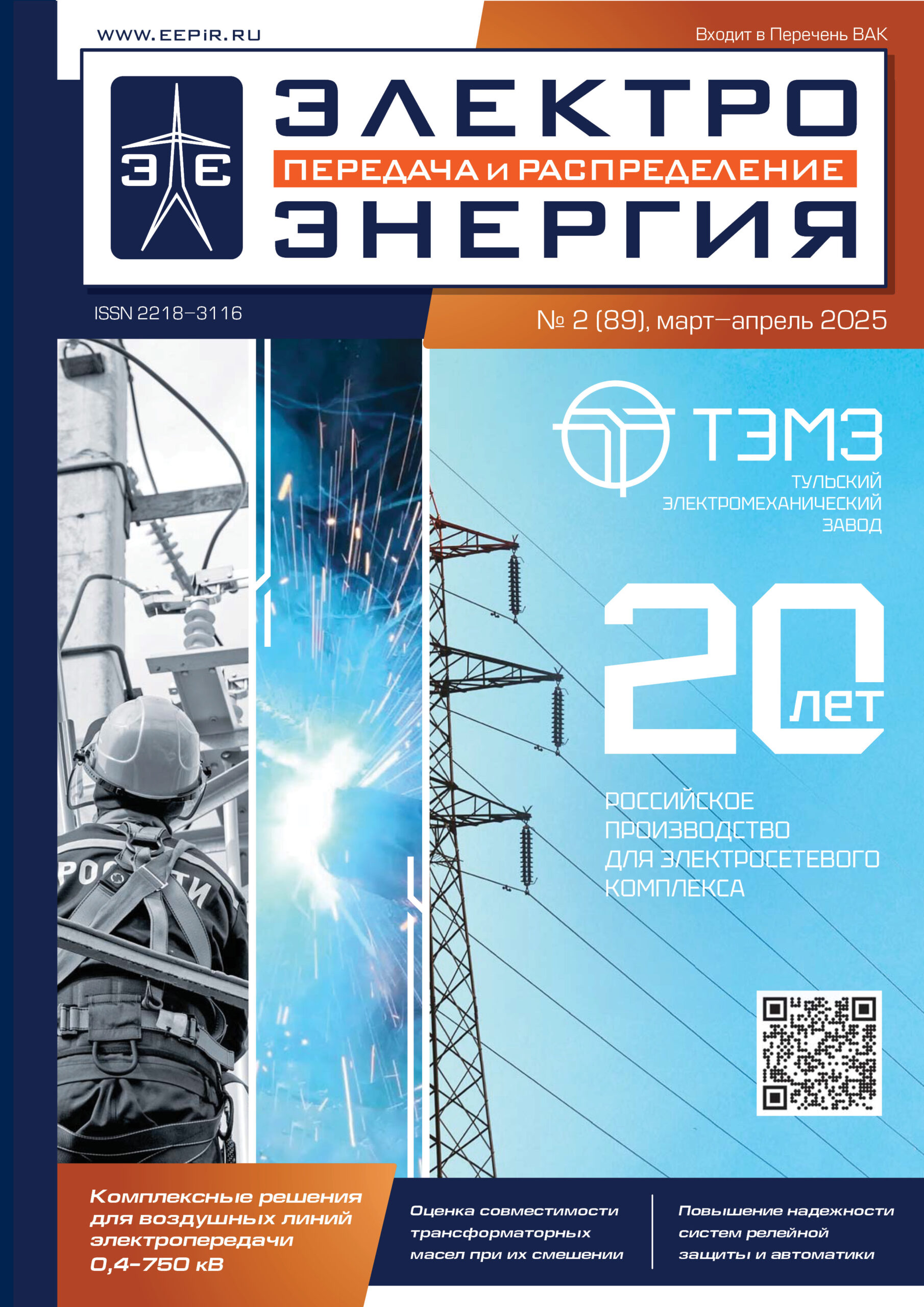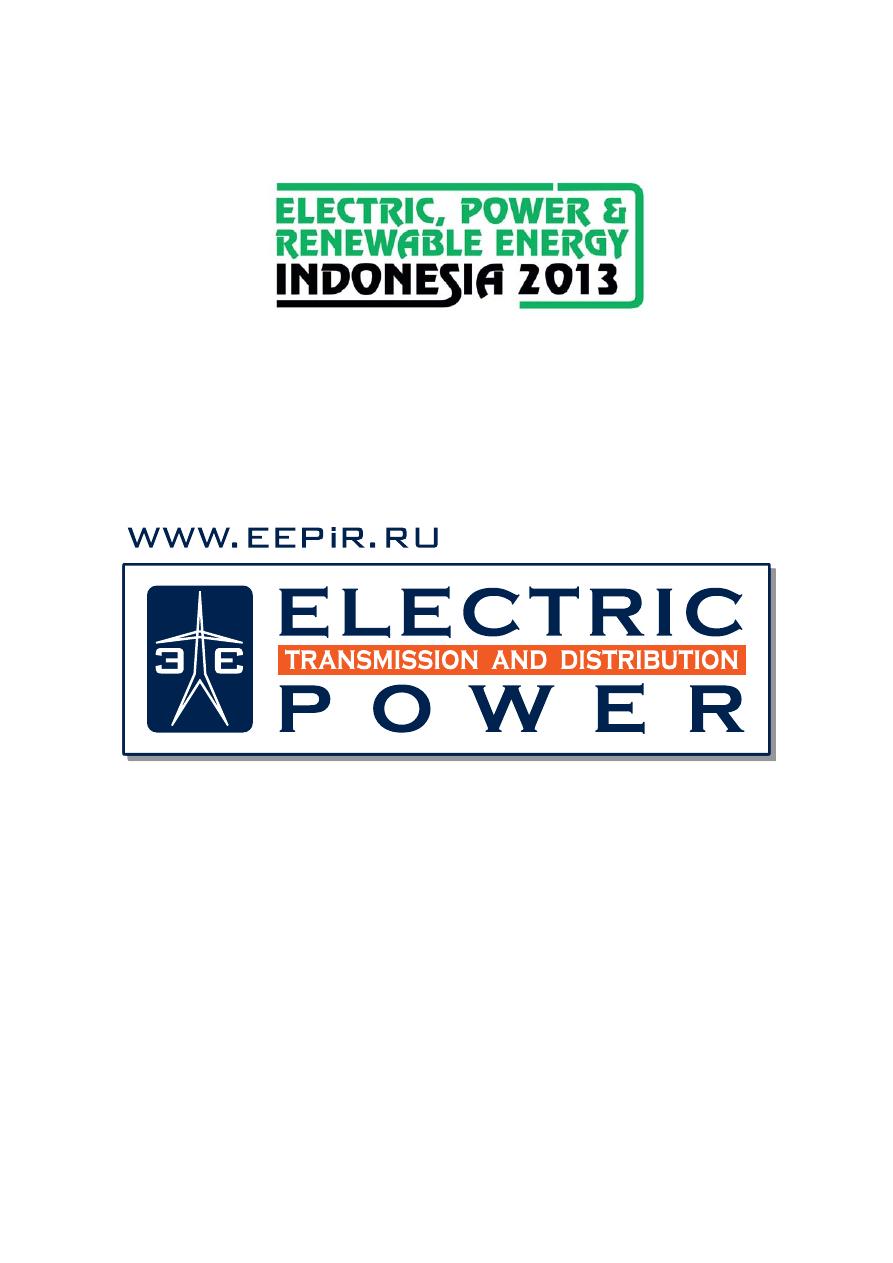
The MAIN JOURNAL for POWER GRID SPECIALISTS in RUSSIA

16
4–7 September, 2013, Jakarta, Indonesia
Wind energy in Russia: state,
trends, prospects
By Ekaterina MIROLIUBOVA (
Екатерина
МИРОЛЮБОВА
),
senior analyst, RBC.research, RBC Consulting Department;
Marina KARNAUKHOVA (
Марина
КАРНАУХОВА
), RBC.research analyst
R
ussia from the standpoint of wind energy poten-
tial is one of the richest countries in the world
due to its vast territory favorable for siting
wind farms (the longest coastline, abundance
in forestless
fl
atlands, large water areas).
Wind energy potential of Russia is estimated at
6516.6 billion KWh/year, economic potential amounts to
260 billion KWh/year corresponding to one quarter of the
country’s power generating capacity.
In experts’ opinion, wind power capacities of Russia
are huge and not used today only because of the lack of
certainty in regulatory legislation and speci
fi
c mechanisms
to encourage the development of the industry. The greatest
potential has the Far East region (about 30%), Siberia
(16%), the Far North (14%), and the Altai, Lower and
mid-Volga regions, the Caspian coast and the Republic of
Karelia as well (25% in total).
It is possible to highlight some signi
fi
cant trends in
Russia’s wind-power engineering market:
• increasing demand for small wind plants;
• widening the range of applicability of wind generation
in regions with low wind rates by using rotary wind
turbines;
• application of solar-wind hybrid power plants;
• replacement of diesel-run power plant with small-wind
power plants.
Now small-sized windmills 0.1—0.5 kW are often used
to replace high-cost and environment-unfriendly diesel-
run power plants. Bene
fi
ts of these plants the advantages
of such plants are their relatively low cost and the ability to
work of
fl
ine providing power to speci
fi
c objects (capacity
corresponds to the demand of the connected object, so
excess power to be supplied to the network practically is
not generated).
In regions with insuf
fi
cient annual average wind speed
wind turbines with a horizontal axis of rotation are practi-
cally not applicable — their start-up speed is 3—6 m/s, so
they do not produce a signi
fi
cant amount of power. Howe-
ver, today more and more windmills manufacturers offer
so called rotary wind turbines or vertical wind turbines.
Vertical turbine is featured by its start-up wind speed
which is about 1 m/s. Further research in this area would
remove all restrictions on use of wind energy to produce
power supply.
The most advanced technology is a hybrid, combining
in one set two modules, vertical wind generator and PHVM
(photovoltaic modules)-solar panels.
Complementing each other, they guarantee production
of suf
fi
cient quantities of electricity on all territories and in
any climate conditions. For example, suf
fi
cient to power
street lightning or engineering infrastructure objects (mo-
bile communication base stations, monitoring, weather sta-
tions and so on). Also growing in popularity among con-
sumers are 3-in-1 units, in which the wind turbine and solar
module are complemented by a LED Panel. Besides solar
panels hybrid installations could use other renewables.
Today hybrid stations on the base of wind turbines
are successfully used in remote areas of the Kaliningrad
region (JSC Yantarenergo), JSC “Bashkirenergo” and JSC
“Rostovenergo” and Kamchatka where thermal stations
using heat of the Earth are also successfully utilized.
SCOPE AND MARKET DYNAMICS
According to the World Wind Energy Association
(WWEA) report, installed wind capacity of Russia in
2011 was estimated at 15.4 MW. Other reports say that
the power of operational wind turbines in our country
even lower and is approximately 5—6 MW. As Table 1
shows Russia lags signi
fi
cantly behind FSU countries
such as Estonia, Lithuania, Ukraine and Latvia (whose
installed capacity in 2011, was 184, 179, 151.1 and
31 MW respectively) in installed capacity and wind power
growth rates. Kazakhstan actively developed its wind
power engineering in 2011 by installing new wind power
stations with an aggregate capacity of 1.5 MW in this way
reaching the growth rate to up 300% in 2010—2011.
According to the WWEA report, Russia in 2011 in
comparison with 2010 added only 1.4 MW of aggregate
installed capacity; but taking into account the fact that in
2010 and 2011 installed capacities were the same, one can
make conclusion that during the discussed period part of
wind turbines was outcommissioned.
Wind power share in renewable energy is almost
negligible and in 2010 it amounted up to 0.07% (Table 2).
Meanwhile, in order to achieve 4.5% target indicator of
gross electricity produced and consumed in Russia to come
from renewable sources by 2020 it is necessary that wind
turbines generate capacity amounting to 11.6 billion kWh.
Analytics

17
info@eepr.ru, www.eepr.ru
World rating
in 2011
Country
2011
Power of windmills
installed in 2011, MW
Growth
rate, %
2010
2009
2008
2007
36
Estonia
184
35
23.5
149
142.3
78.3
58.6
37
Lithuania
179
16
9.8
163
91
54.4
52.3
38
Ukraine
151.1
66.1
73
87.4
90
90
89
56
Latvia
31
1
3.3
30
28.5
26.9
27.4
62
Russia
15.4
1.4
9.1
15.4
14
16.5
16.5
73
Belarus
3.5
1.6
0
1.9
1.9
1.1
1.1
76
Armenia
2.6
0
0
2.6
2.6
0
0
80
Kazakhstan
2.2
1.5
300
0.7
0.5
0.5
0.5
81
Azerbaijan
2.2
0
0
2.2
2.2
2.2
2.2
Source: WWEA
Table 1. Wind power aggregate installed capacity dynamics in Russia and FSU
countries in 2007—2011, MW
Modernization Program of United National Power Grid
of Russia for the period up to 2020 foresees rapid develop-
ment of wind energy. The
fi
rst phase of the Program (up
to 2016) wind energy share in the renewable gross energy
production should amount to 19%. This phase foresees
commissioning of 185 MW wind farm “Lower Volga”,
50 MW Vorkuta wind stations and 338 MW Krasnodar
wind mills. The second phase of the Program is planned
for 2016—2020 years. During this period wind generation
should strengthen its position in the overall electricity pro-
duction structure and its share should increase to 34%. The
second phase also includes construction of 150 MW wind
plant Kalmytskaya and a number of windmills in the Kras-
nodar Krai with a capacity of 500 MW.

18
4–7 September, 2013, Jakarta, Indonesia
Year
Grid power
capacity in Russia
Renewable energy
capacity
Wind power
capacity
The share of wind power in electricity
generation based on renewable energy, %
2000
877 800
4550.7
2.917
0.06
2001
891 300
4788.2
4.12
0.09
2002
891 300
5021.7
6.645
0.13
2003
916 300
5362.7
8.832
0.16
2004
931 900
5982.1
14.075
0.24
2005
953 100
5892.2
9.63
0.16
2006
931 381
5929.4
8.383
0.14
2007
1 008 256
6027.5
6.623
0.11
2008
1 040 400
6460.2
5.235
0.08
2009
990 000
6750.9
3.942
0.06
2010
1 025 394
6320.1
4.186
0.07
Source: Institute of Energy Strategy
Table 2. 2000—2010 Russia renewable energy capacity, million kWh
MAJOR OBSTACLES TO THE
DEVELOPMENT OF WIND GENERATION
MARKET IN RUSSIA
In spite of the obvious appeal of wind power develop-
ment in Russia due to its huge potential, this process is
going very slowly for a number of constraints.
Historic commitments to large power generation facili-
ties (CHP, nuclear, hydro) now de
fi
ne the indifference to
wind power in the Russian Federation.
One of the paramount challenges of the wind power
industry, as well as other sectors of the Russian alterna-
tive energy, is the absence of thorough legal framework.
For example, “Technical operation rules for power plants
and networks” does not include even a notion of a wind
generation. The industry requires regulations and standards
that will ensure the safe operation of generating capacities.
The issue of technological connection of wind generation
to electricity networks is still unsolved; there is no cost-re-
covery mechanism for up to 25 MW generators connection.
Meanwhile this organizational barrier is related to the
objective lack of technology.
Wind station generation depends on the strength of
wind, a factor featured by signi
fi
cant intermittency. Ac-
cordingly, wind station electricity supply to the grid is er-
ratic both on a daily, weekly, and monthly and annual ba-
sis. Given that the power system load is not uniform (peak
and off-peak periods that cannot be regulated by the wind
generation), addition of large-scale wind generation to the
power system contributes to its destabilization. Thus wind
generation requires a good backstop in the power system
(e.g. gas turbine plants) and mechanism to smooth their in-
termittent generation (HPP or PSPP). This feature greatly
increases the cost of electricity produced by wind stations.
Grid and power system dispatch problems due to intermit-
tent wind generation begin when wind generation share in
the power system installed capacity reaches 20—25%. For
Russia this
fi
gure is close to 50000—55000 MW. Because
of the fact that power systems are not eager to connect
wind generation to the grid a number of foreign govern-
ments issued legislative act obliging them to do it.
Wind farm ef
fi
ciency is certainly less than coal or gas
power plants. Despite this, in Germany, for example, the
installed capacity of all wind turbines can be compared
with the installed capacity of all the plants of the concern
«Rosenergoatom».
Along with almost complete absence of government
support for wind generation, Russia continues to subsidize
unpromising projects, e.g. thermal power generation.
One more problem — wind generation age that in some
sites exceeds 20 years. A great part of the equipment was
imported from abroad in the late 1990's and early 2000's,
after having been in operation for 5—10 years. The re-
placement of the equipment, obsolete physically and mor-
ally requires considerable investment.
Foreign experience showed that the most valid driver
to increase wind turbine demand is to introduce compen-
satory tariff. According to estimates by Russian Associa-
tion of Wind Power Industry for EBRD and Market Coun-
cil, the amount of the allowance to the market price of
wind turbine energy should be between 1.59 to 2.07 rub.
(5—6.3 cent) for 1 kWh. If this allowance still be intro-
duced in the near future, industry players will be possible
to carry out the plan of the Government for installation to
2020, 7 GW of wind energy capacity.
However, according to some experts, Russia has a pow-
erful oil lobby, opposed to the incentive tariff allowances
that would have made the construction of wind turbines
cheaper than coal or gas-
fi
red plants. Meanwhile the cost
of wind power is too high to compete with conventional
electricity network and ranges from 4 to 10 rubles (12—
30 cent) for 1 kWh. The process of raising tariffs for elec-
tricity network to this level can take several years.
Obviously, that in the case of mass application the wind
power will become a powerful center of development not
only of the domestic electrical engineering but also the
whole R&D complex.
Analytics
Оригинал статьи: Wind energy in Russia: state, trends, prospects
Russia from the standpoint of wind energy potential is one of the richest countries in the world due to its vast territory favorable for siting wind farms (the longest coastline, abundance in forestless flatlands, large water areas).




